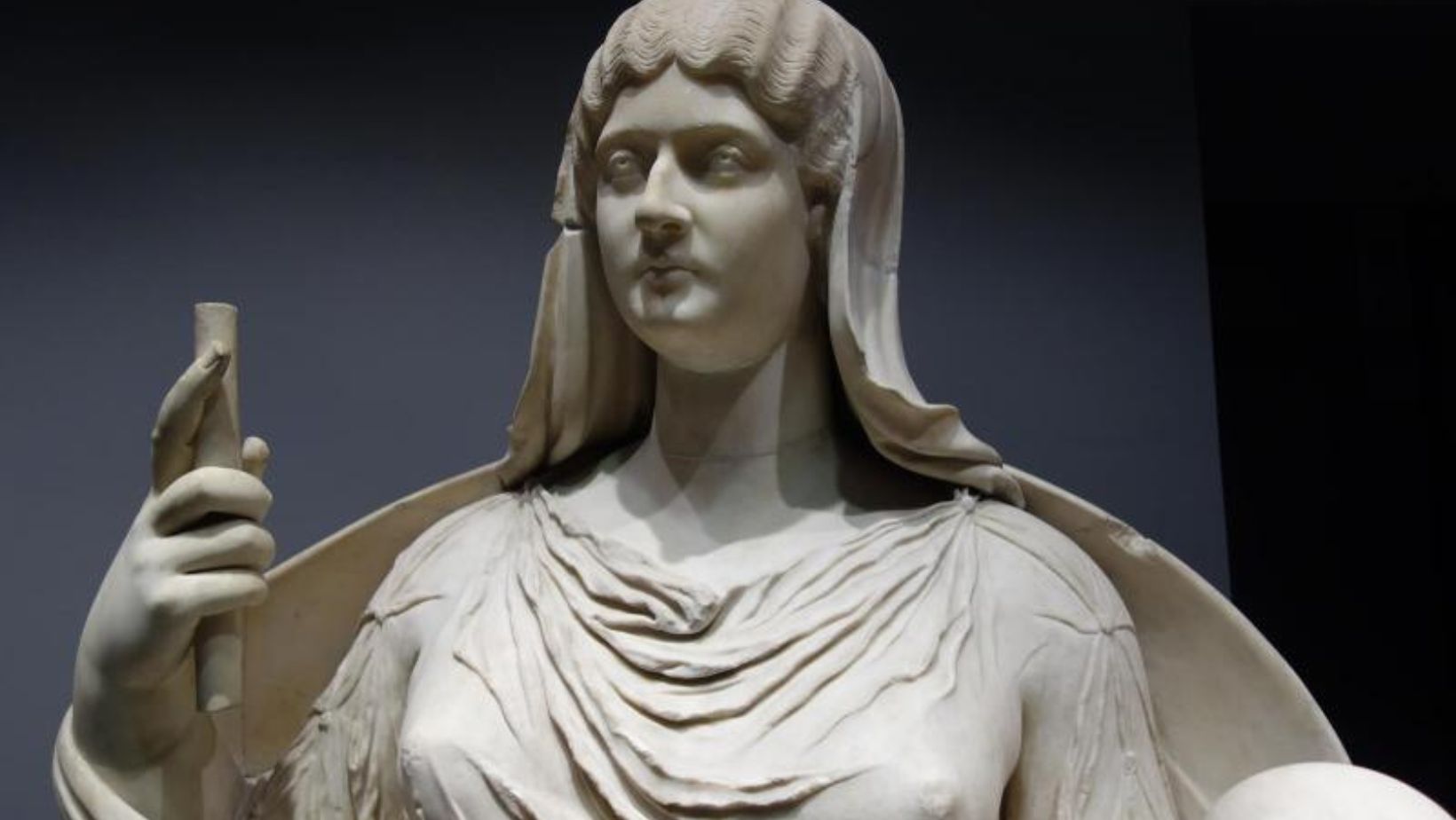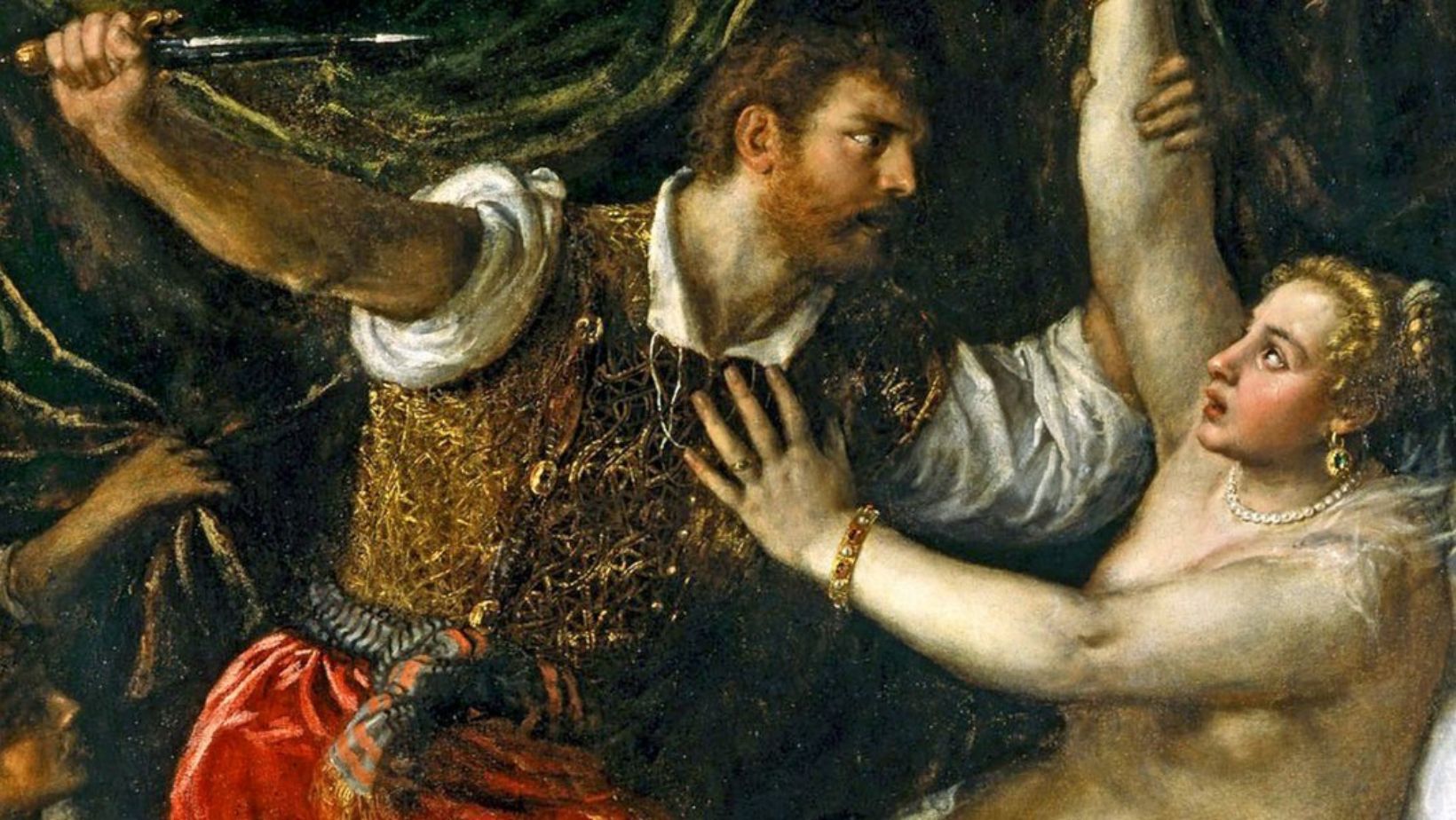At the heart of ancient Rome’s transformation lies a tale that has echoed through centuries, shaping civilizations. The story of Lucretia and Brutus is not just a narrative; it’s a turning point that led to the birth of the Roman Republic. With roots deeply entwined in virtue, tragedy, and rebellion, this account goes beyond mere events—it symbolizes resistance against tyranny.
Imagine Rome at its infancy—ruled by kings where power was absolute but on shaky ground. Then enters our protagonists—a virtuous woman wronged and a man who turned grief into action. Diving into their story really shines a light on the importance of knowing our history; it’s like uncovering treasure troves of lessons on how to stand strong even when times get tough.
Table of Contents:
- The Tragic Tale of Lucretia
- Brutus and the Overthrow of the Monarchy
- The Legacy of Lucretia and Brutus
- Artistic Depictions of the Story
- Conclusion
The Tragic Tale of Lucretia: The Story of Lucretia and Brutus

Lucretia’s story, about a Roman woman whose tragic end and bravery led to a massive upheaval, holds a special place in the tales that shaped Rome. It’s a story of virtue, violence, and the birth of a new era in Rome.
Lucretia was no mythological figure, but a real woman living in the 6th century BCE. Her tragic story is recounted in the works of Roman historians Livy and Ovid.
By all accounts, Lucretia was the epitome of a virtuous Roman woman. Faithful, modest, and industrious, she embodied the ideal of the Roman matron.
Her beauty was also renowned, catching the eye of Sextus Tarquinius, son of the tyrannical Roman king Lucius Tarquinius Superbus. But Lucretia’s beauty was matched by her chastity, which would soon be put to a terrible test.
The Evil Deed of Sextus Tarquinius: The Story of Lucretia and Brutus
Inflamed by lust and perhaps a perverse desire to corrupt Lucretia’s virtue, Sextus Tarquinius forced himself upon her, threatening death and dishonor if she resisted.
Lucretia, valuing her honor above her life, submitted to the rape. But she would not allow the shame to stain her name or that of her family.
Lucretia’s Suicide
The next day, Lucretia summoned her husband Collatinus and father Spurius Lucretius Tricipitinus. She revealed the terrible crime that had been committed against her and, despite their pleas, took her own life with a dagger.
As recounted by Livy, Lucretia declared before ending her life: “My body only has been violated. My heart is innocent, and death will be my witness.”
To the Romans, what she did last was nothing short of heroic—a clear sign that she was a person of great character. Her sacrifice was the spark that set everything off, burning down the Roman monarchy and paving the way for a new era – welcome to the republic.
Brutus and the Overthrow of the Monarchy: The Story of Lucretia and Brutus
Lucretia’s rape and suicide sent shockwaves through Rome. But it was the response of her kinsman, Lucius Junius Brutus, that would transform outrage into open rebellion.
Brutus, who had witnessed Lucretia’s death, made a solemn vow to avenge her and free Rome from the tyranny of the Tarquins. His words and deeds would alter the course of Roman history.
As Lucretia’s body lay before him, Brutus pulled the dagger from her breast and swore a mighty oath. As recorded by Livy, Brutus cried:
“By this blood, most pure before the outrage wrought by the prince, I swear, and I take you, gods, to witness, that I will pursue Lucius Tarquinius Superbus and his wicked wife and all their children, with sword, with fire, aye with whatsoever violence I may; and that I will suffer neither them nor any other to be king in Rome.”
This was no idle threat. Brutus, previously known for his simplicity, now revealed his true cunning and resolve. He would be the spark that lit the flame of revolution.
Rallying the People of Rome
Brutus wasted no time rallying the people to his cause. Lucretia’s body was carried to the Roman Forum, where Brutus recounted her tragic tale and his vow to overthrow the Tarquins.
The people, long oppressed by the cruel and arrogant king, rose up in support of Brutus. The Tarquins were expelled from the city, and the monarchy was no more.
Establishing the Roman Republic: The Story of Lucretia and Brutus
In place of the kings, Brutus helped establish a new form of government: the Roman Republic. He and Lucretia’s widower, Lucius Tarquinius Collatinus, became the first consuls of Rome in 509 BCE.
The republic would endure for over 450 years, shaping Roman society and laying the groundwork for Rome’s dominance. At its core was the story of Lucretia – a reminder of the virtues and values that the republic stood for.
The Legacy of Lucretia and Brutus: The Story of Lucretia and Brutus

The tale of Lucretia and Brutus has echoed through the ages, inspiring art, literature, and political thought. Their legacy is one of courage, principle, and the eternal struggle against tyranny.
For the Romans, Lucretia was the ultimate exemplar of female virtue. Her chastity, loyalty, and self-sacrifice became the standard by which Roman women were measured.
As Livy writes, “The matron of Rome must henceforth find in Lucretia the pattern of their bearing and their character.” Her story was used to uphold traditional gender roles and expectations in Roman society.
Brutus as the Founder of the Republic: The Story of Lucretia and Brutus
Brutus, too, became a symbol – the father of the Roman Republic. His oath to avenge Lucretia and liberate Rome was seen as the founding act of the new order.
Brutus’s legacy was one of uncompromising commitment to liberty and the rule of law. Later Romans would look to him as a model of republican virtue and a defender against tyranny.
The Enduring Influence on Roman Culture
The story of Lucretia and Brutus became deeply ingrained in Roman culture. It was retold by historians, celebrated by poets, and depicted in art.
Their tale embodied the Roman ideals of honor, duty, and civic responsibility. It also served as a cautionary tale about the dangers of unchecked power and the importance of defending liberty.
The legacy of Lucretia and Brutus extended far beyond their own lifetimes. They became enduring symbols of the values and virtues that defined Roman civilization.
Artistic Depictions of the Story: The Story of Lucretia and Brutus
The tragic tale of Lucretia and the birth of the Roman Republic has inspired countless works of art over the centuries. From ancient frescoes to Renaissance masterpieces, artists have been drawn to the drama and pathos of Lucretia’s story.
One of the most famous literary adaptations is William Shakespeare’s narrative poem “The Rape of Lucrece,” published in 1594. Shakespeare’s version expands on the psychological and emotional dimensions of the story.
In vivid verse, Shakespeare depicts Lucretia’s inner turmoil, Tarquin’s moral struggle, and Brutus’s righteous anger. The poem is a meditation on lust, virtue, and the corrupting nature of power.
Paintings and Sculptures
Lucretia’s story has also been a favorite subject for visual artists. The dramatic moment of her suicide, in particular, has been depicted by many of the great masters.
Rembrandt, Titian, Botticelli, and Raphael all painted scenes from Lucretia’s story. These works often emphasize Lucretia’s beauty and virtue, as well as the anguish of her final moments.
Lucretia’s suicide has also been immortalized in sculpture. One of the most famous examples is the “Suicide of Lucretia” by Italian sculptor Damiano Cappelli, which captures the moment of Lucretia plunging the dagger into her breast.
Literary Adaptations: The Story of Lucretia and Brutus
Shakespeare wasn’t the only one captivated by Lucretia’s story; a whole bunch of other writers found their muse in her tale too. In his work Fasti, the Roman poet Ovid spun the tale of Lucretia anew, shedding light on how her tragic end stirred political waves.
In the 17th century, French writer Madeleine de Scudéry adapted the tale in her novel Clélie. Scudéry’s version reimagines the relationship between Lucretia and Brutus, portraying them as platonic lovers following the path of tender friendship.
Lucretia’s story continues to resonate with modern audiences. It has been adapted into operas, plays, and even a 1946 Italian film. Every time someone retells the story of Lucretia, it’s like adding a new layer to this age-old tale that never gets old.
Key Takeaway: The Story of Lucretia and Brutus
Lucretia’s tragic tale, from her virtue and unjust suffering to her suicide, sparked a revolution leading to the Roman Republic’s birth. Her story alongside Brutus’s vow against tyranny shows courage and principle in the face of oppression.
Conclusion: The Story of Lucretia and Brutus
The legacy left by Lucretia’s bravery and Brutus’ resolve stands tall even today as we recount their ordeal.
It wasn’t just about vengeance or justice; it was about setting precedents for governance based on values rather than fear or coercion.
This chronicle does more than narrate past events—it inspires future generations to uphold integrity over acquiescence.
So as we reflect on The story of Lucretia and Brutus, let’s remember it as more than an ancient anecdote—it’s an enduring beacon guiding toward fairness, democracy, and courage against odds.

